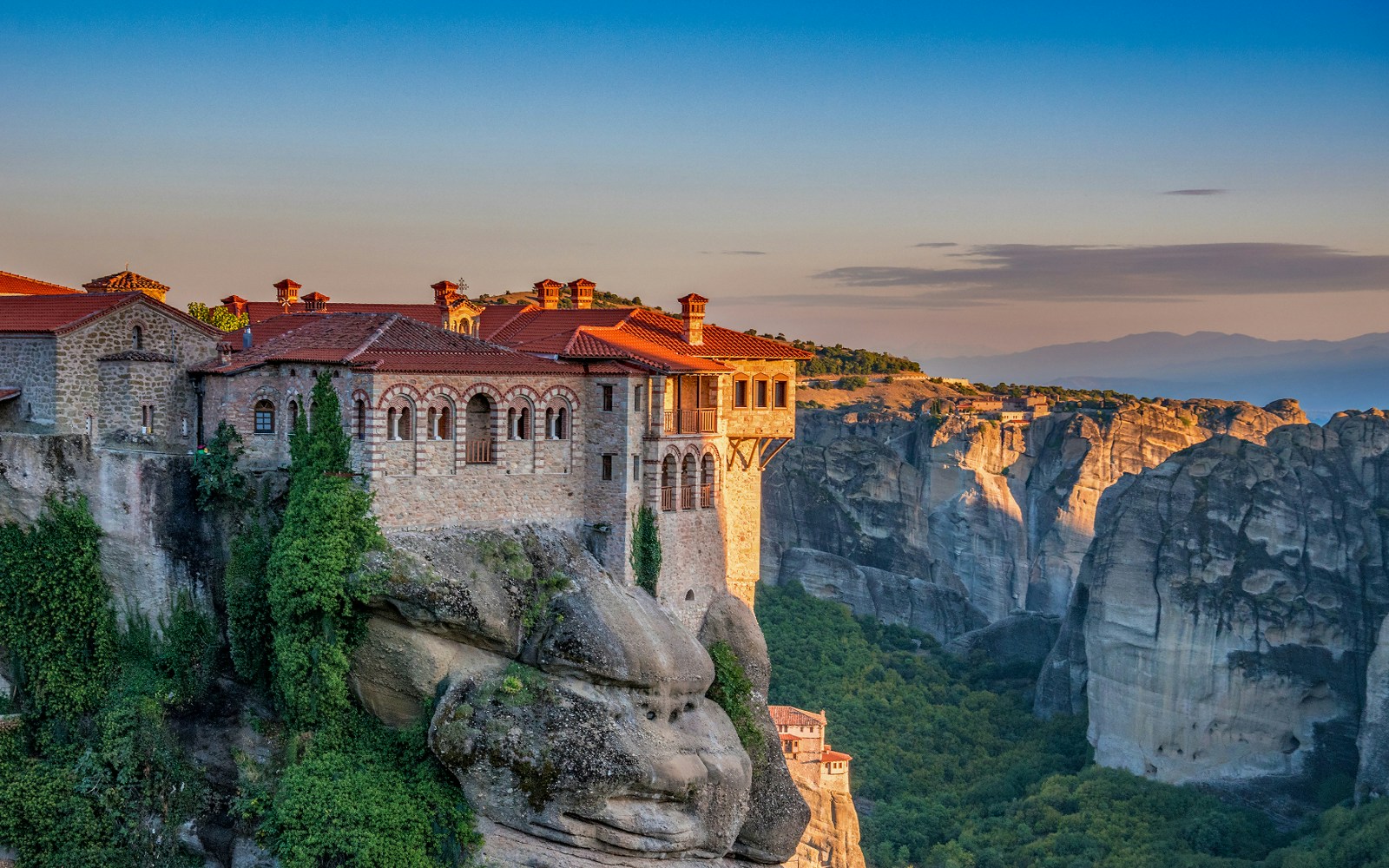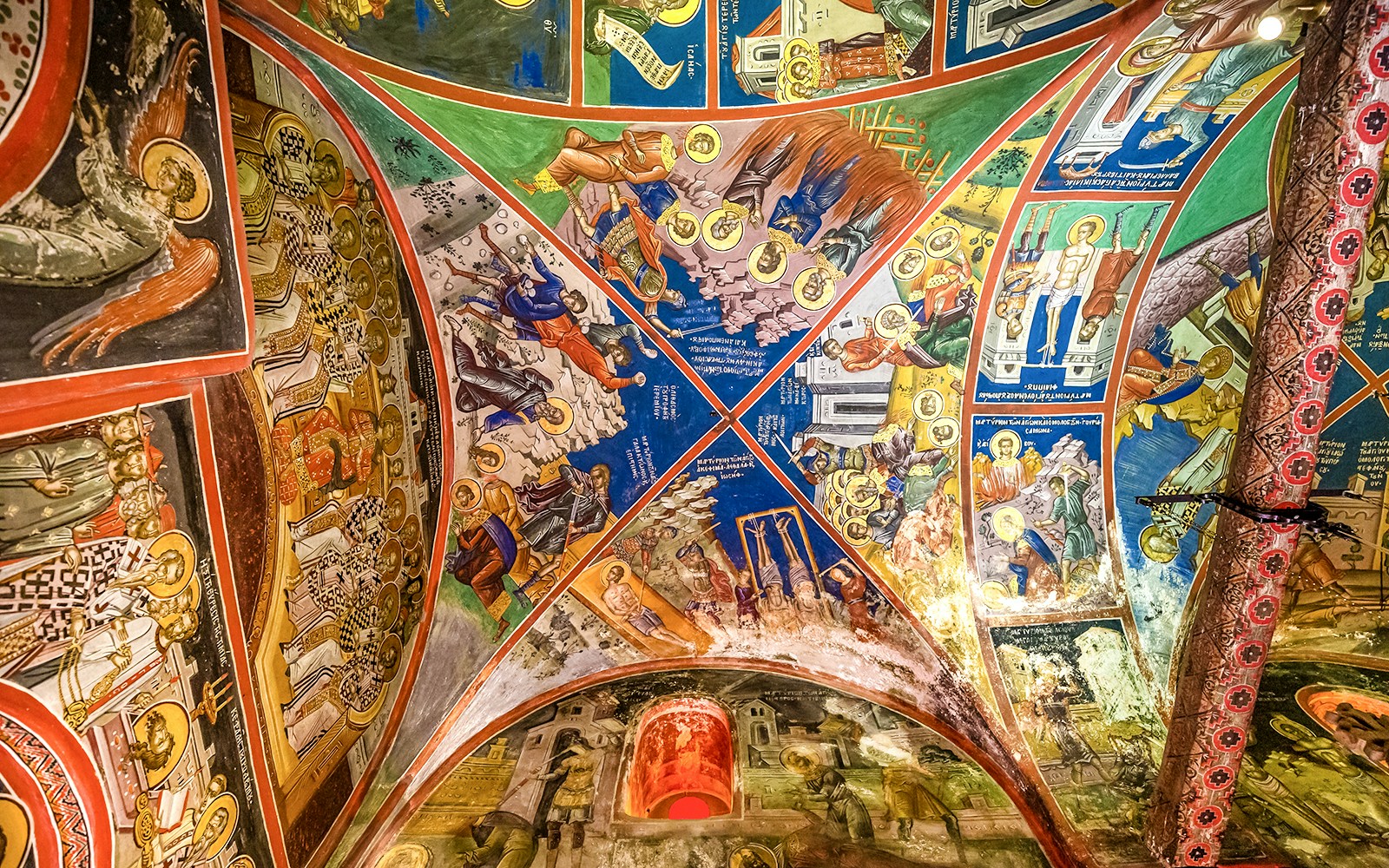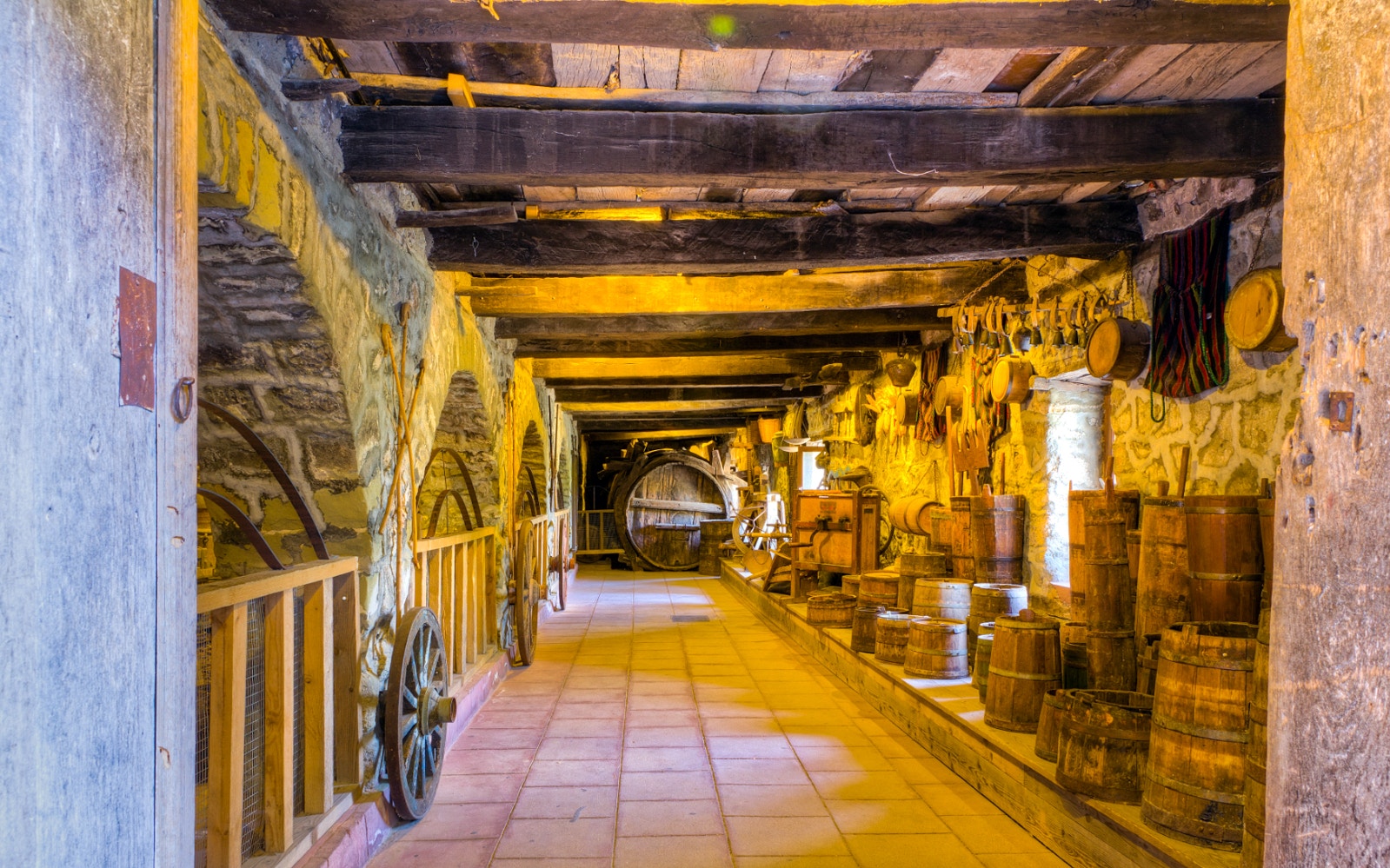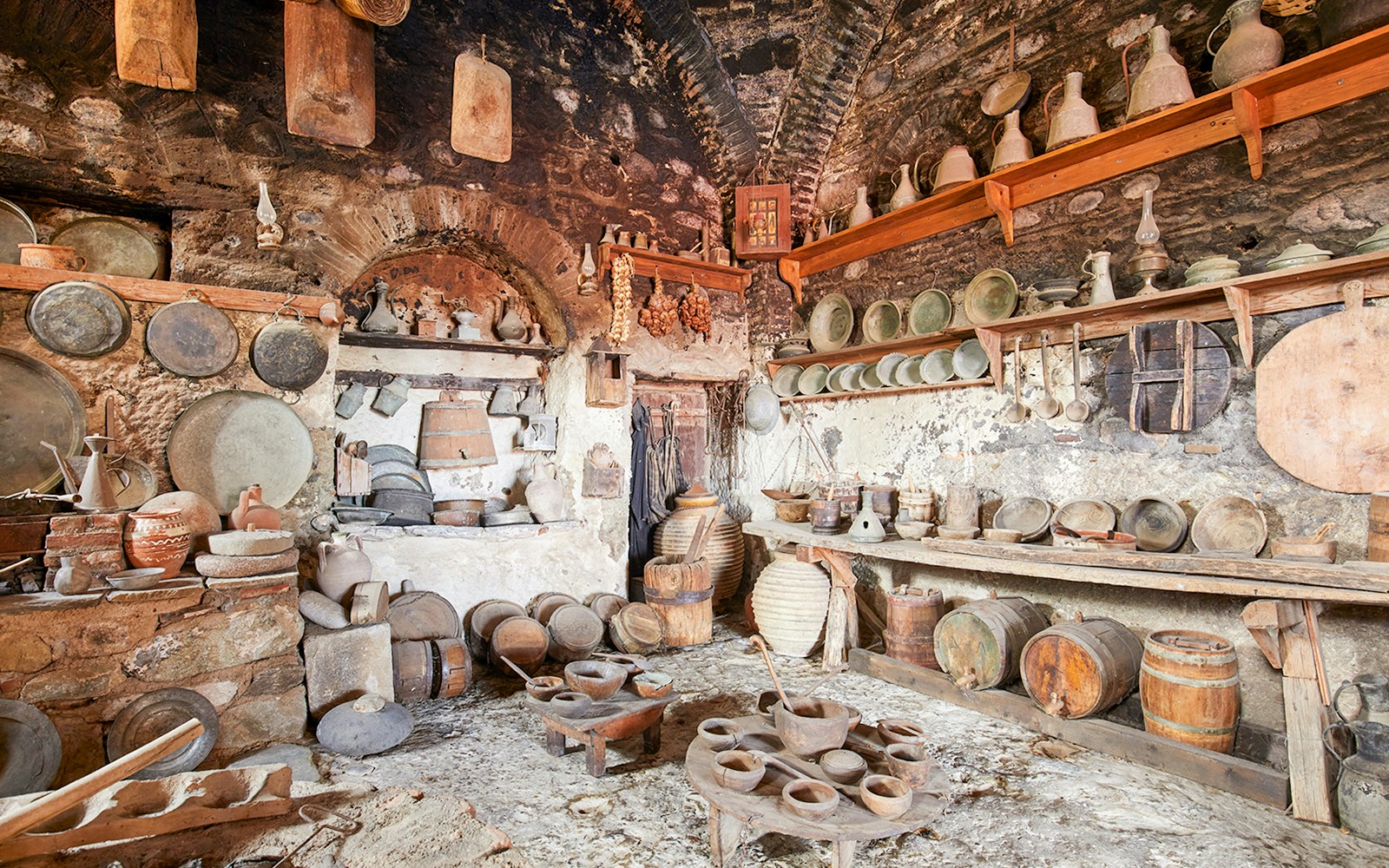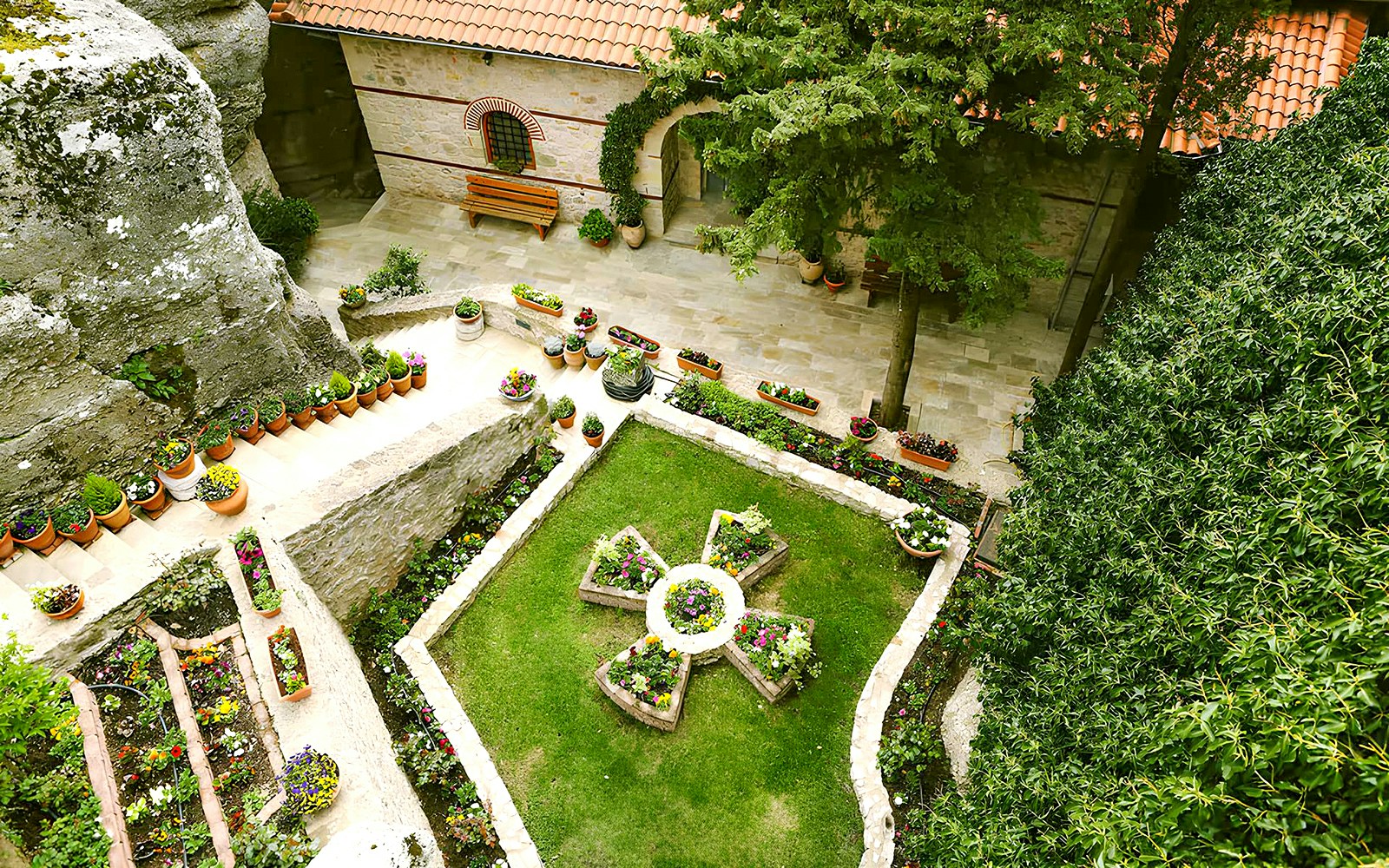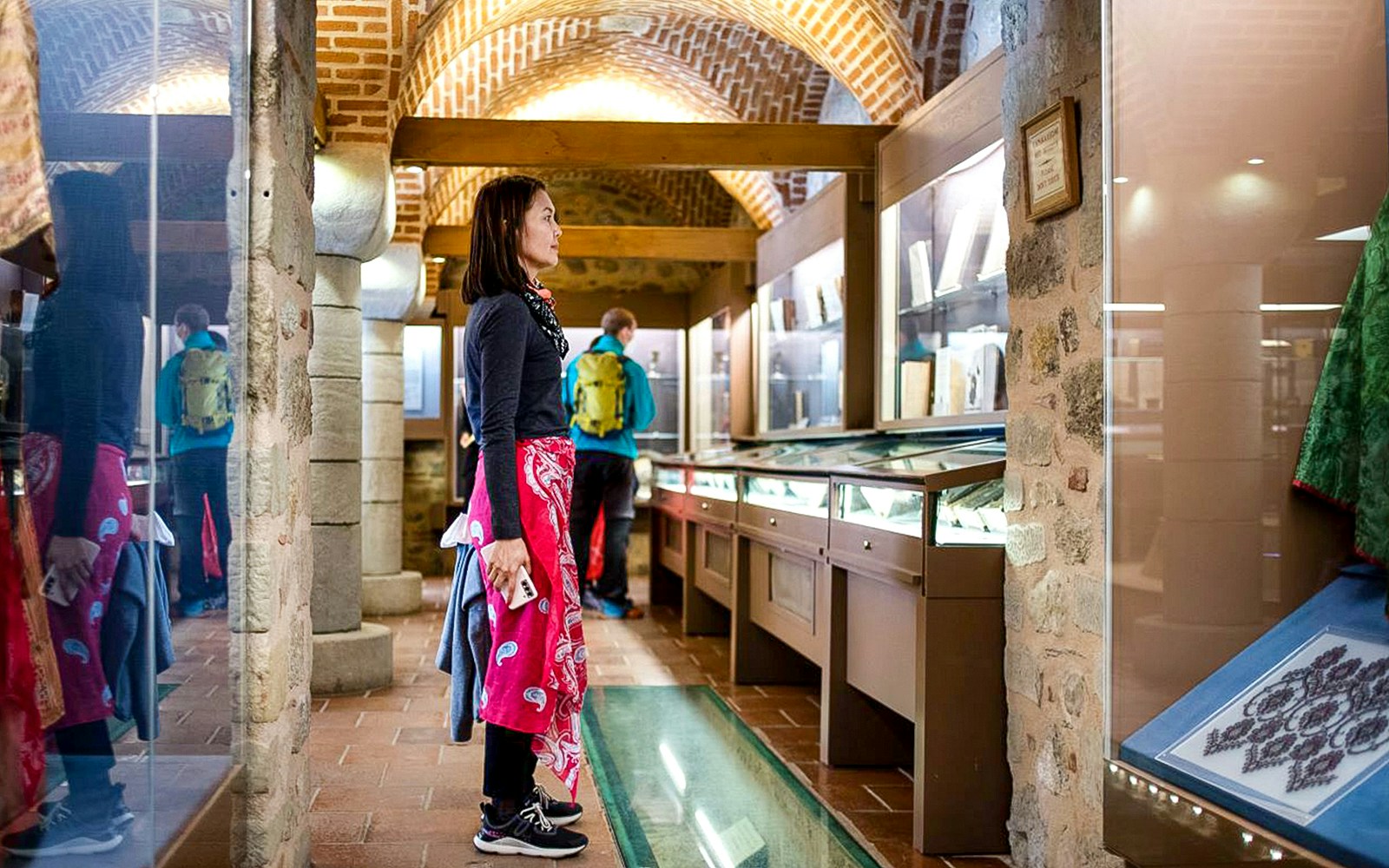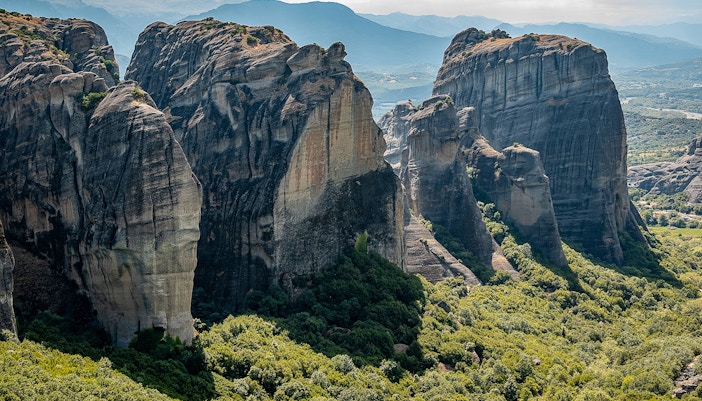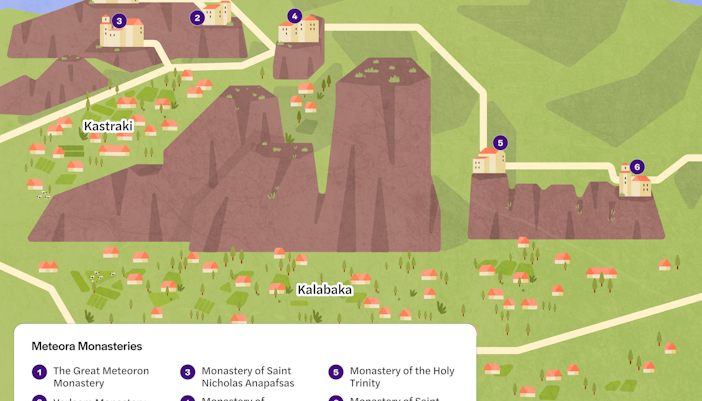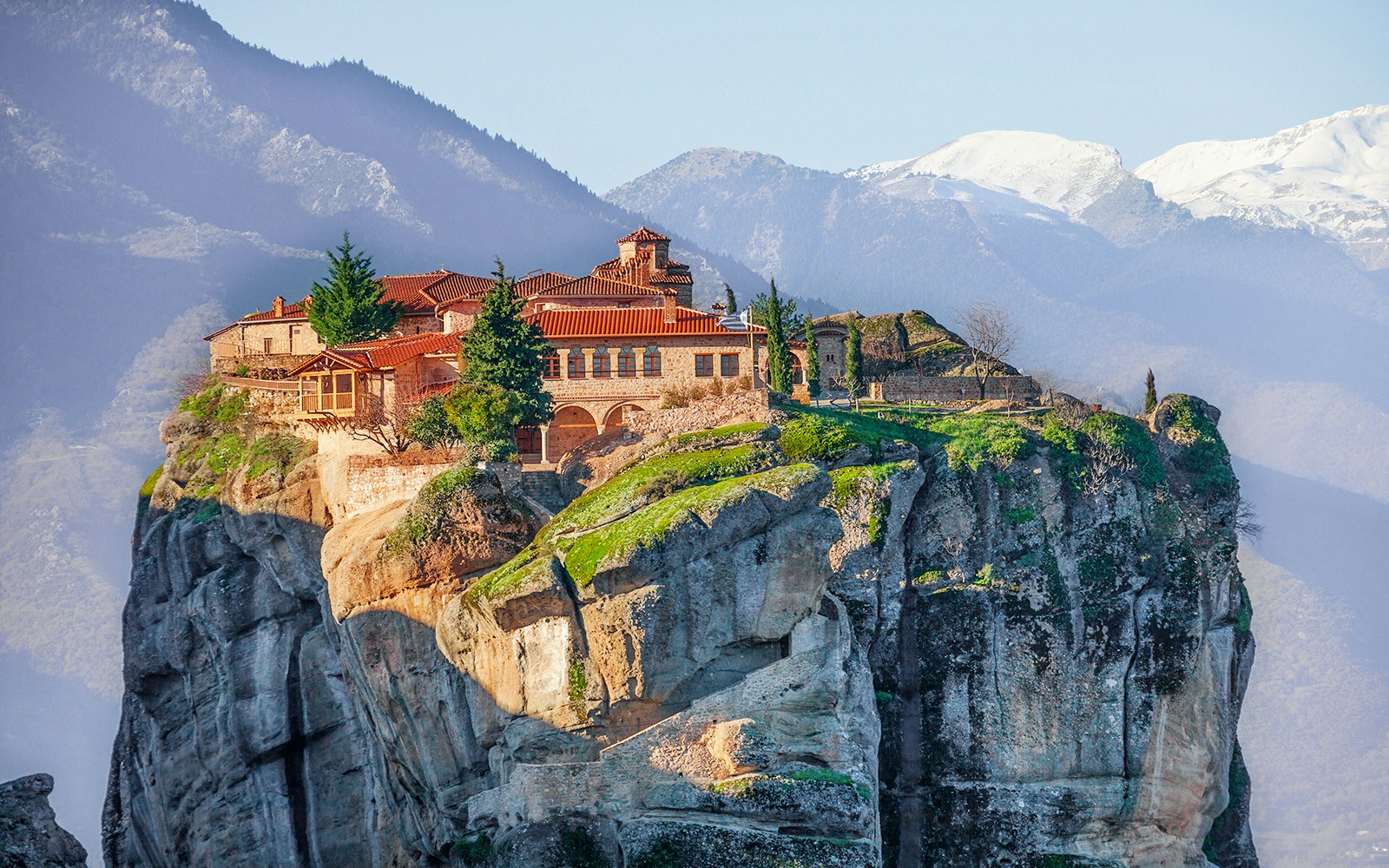Why Holy Trinity Monastery is a must-see in Meteora
Dramatic cliffside setting
Built in the 15th century on a near-vertical rock pillar, Holy Trinity is often described as the most dramatic of all Meteora’s monasteries. Its cliffside perch makes it look like it is floating above the valley, offering sweeping views of the vast plains of Thessaly, the surrounding jagged cliffs, and the winding Peneios River below.
Hollywood fame
The Holy Trinity shot to worldwide fame when it appeared in the James Bond film For Your Eyes Only (1981). Even today, you feel a cinematic thrill standing where the scenes were filmed, adding a playful pop culture twist to its centuries of history and devotion.
Atmospheric ascent
To reach, you climb more than 100 steps carved straight into the cliff. The zigzagging path heightens the anticipation, reminding you that for centuries, the only way up was in swaying rope baskets. Even before you step inside, the climb itself feels like an adventure.

